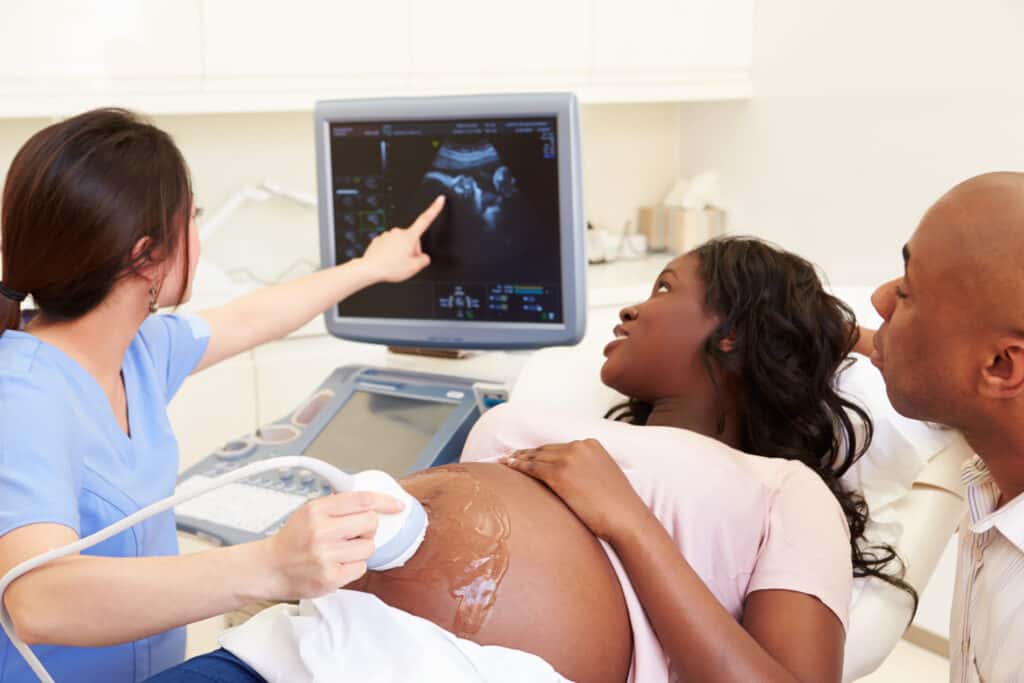
When a woman’s life is in danger?
Abortion, the intentional killing of a pre-born human being, is never necessary to save the life of the mother. Abortion exceptions for “the life of the mother” are never necessary in bills of equal protection.
This rhetoric was easy to push in the 70s and 80s when ignorance of fetal life and women’s health abounded. The majority of Americans knew that babies grew in women, and that sometimes women got sick. Most people had heard of women occasionally dying during birth or pregnancy, or that a baby was lost or miscarried – but how that all worked was for the experts. There was no shortage of worthless “experts” to insist that abortion was a necessary part of healthcare.
Since that time, many reputable physicians and health experts have pointed out that there are no conditions that exist that require a child to be intentionally killed during the course of the treatment for the mother [1][2]. Pro-abortionists have been challenged to provide examples, but the cases they have brought forward as supposed proof of “medical necessity” for abortions instead prove the spurious nature of their claims.
An oft-cited example is pre-eclampsia. This condition can occur as early as 20 weeks gestation, though it’s more likely after 30 weeks. It often develops over the course of months or weeks, but it can also develop quickly over the course of days. In mild cases, monitoring and some medications can keep it from worsening. In more severe cases, it is common to consider delivering the baby, as most cases resolve within hours or days of delivery.
Now that the reader has had a chance to read a little on this condition, has anyone noticed that there is no need to kill the baby on the way out? This really has nothing to do with abortion. When a case like this presents itself, a physician sees two patients and is weighing the best treatment options for both. This care is not provided by an abortionist. It is overseen by a real doctor. It is not done at an abortion clinic, it is done at a real hospital equipped to care for the mother and the baby. Following the treatment, the physician must document what they did and what the outcome was. They do not report this as an abortion, even if the baby dies.
The same can be said for heart conditions, cancer, traumatic injuries, ectopic pregnancy, and other medical conditions that may arise. There is no need to target the developing child for destruction. The ethical course of action would be to recognize that two patients exist, regard both patients when considering treatment, and ideally act to protect and preserve the lives of both if possible. Understandably, it is not always possible to save both. Again, when these conditions arise, they are not treated by an abortionist. They are not treated at an abortion clinic. They are not reported as abortions, so there doesn’t need to be a law making an exception for abortion for something that is NOT an abortion.
Abortion advocates who continue to insist that abortion must be allowed need to realize we have moved on from 1923.
[1] DUBLIN DECLARATION ON MATERNAL HEALTHCARE “As experienced practitioners and researchers in obstetrics and gynaecology, we affirm that direct abortion – the purposeful destruction of the unborn child – is not medically necessary to save the life of a woman. We uphold that there is a fundamental difference between abortion, and necessary medical treatments that are carried out to save the life of the mother, even if such treatment results in the loss of life of her unborn child. We confirm that the prohibition of abortion does not affect, in any way, the availability of optimal care to pregnant women.”
[2]AAPLOG’s Position on “Abortion to Save the Life of the Mother?” Abortion is the purposeful killing of the unborn in the termination of a pregnancy. AAPLOG opposes abortion. When extreme medical emergencies that threaten the life of the mother arise (chorioamnionitis or HELLP syndrome could be examples), AAPLOG believes in “treatment to save the mother’s life,” including premature delivery if that is indicated — obviously with the patient’s informed consent. This is NOT “abortion to save the mother’s life.” We are treating two patients, the mother and the baby, and every reasonable attempt to save the baby’s life would also be a part of our medical intervention. We acknowledge that, in some such instances, the baby would be too premature to survive.